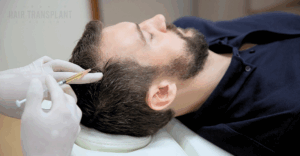Alopecia is a condition that is often mispronounced, but even more frequently – misused. While the mispronunciation is definitely understandable, this week we’re going to break down the different types of alopecia and their causes.
The word alopecia itself is a broad term that covers a wide range of varying conditions caused by an immune system that isn’t functioning properly. Rather than a healthy immune system attacking viruses and invaders, it attacks the growing hairs of the body or scalp.
Alopecia Areata (AA), Totalis (AT), Universalis (UT)
AA is when the associated hair loss is concentrated on the scalp, but in patches. It can temporarily remain in small smooth patches, and the follicles can recover and hair will grow back. It can also, however, progress further.
As AA progresses, it can lead to total hair loss of the scalp (AT). In this stage, it is much more difficult for the follicles to recover and the baldness it causes is more likely to be permanent.
Alopecia Universalis (UT) is the total cessation of hair growth on both the scalp and body. This includes everything from leg hair to eyelashes. This is a permanent, hereditary condition and is very difficult to treat.
Alopecia Barbae
This form of alopecia is specific to men – the loss of bread growth, or bald patches in the moustache or beard. While it is difficult to treat the conditions listed above, alopecia barbae can be successfully reversed and masculinity restored.
While there are many more conditions associated with alopecia, these are the ones we think of first and often refer to in casual conversation. Luckily these conditions are fairly rare and are therefore not likely to be what is causing you to thin out.
Although technically male and female pattern baldness is referred to as Androgenic Alopecia, it is not an autoimmune condition and is much easier to combat.





